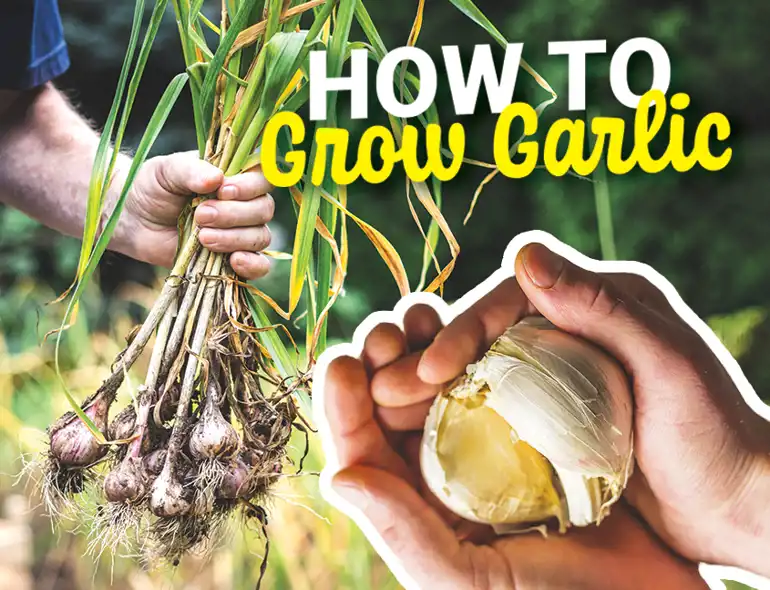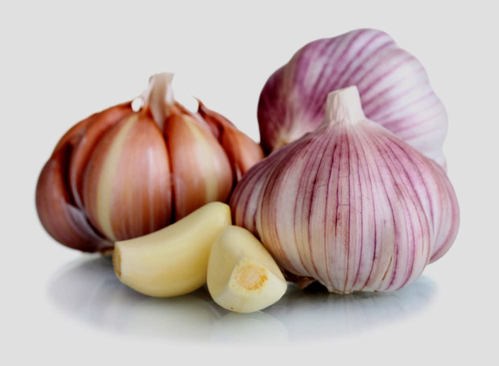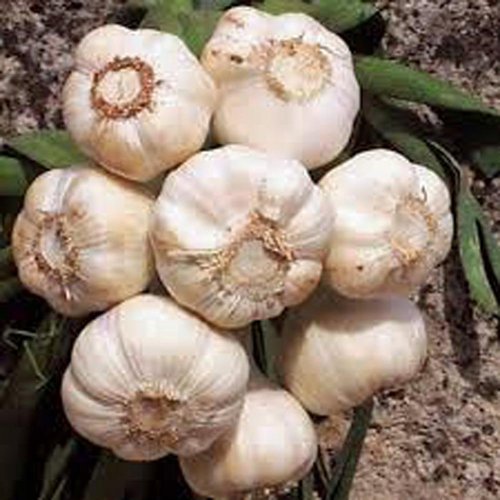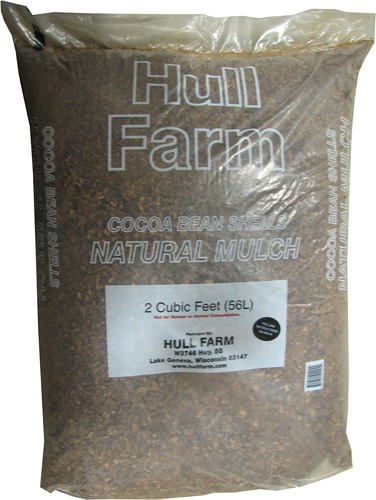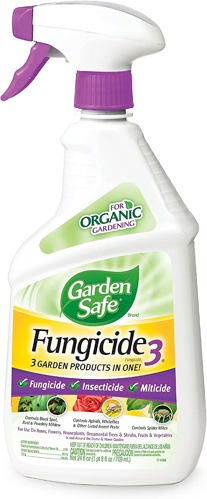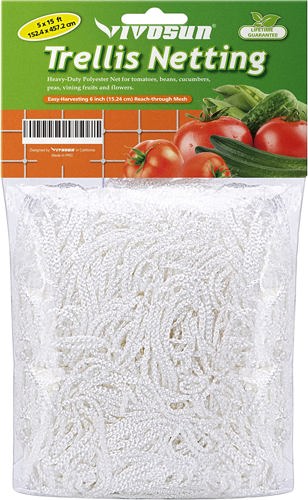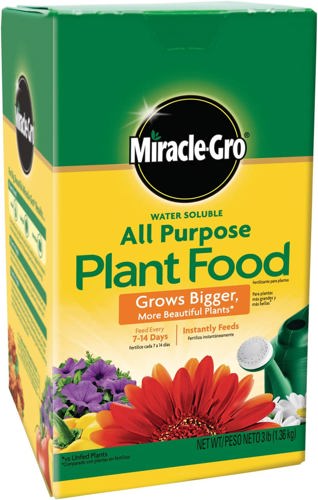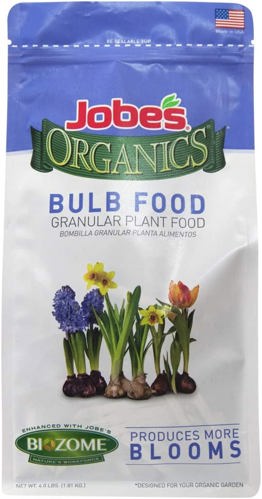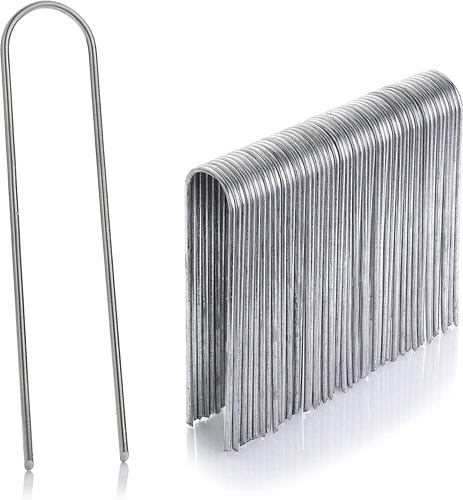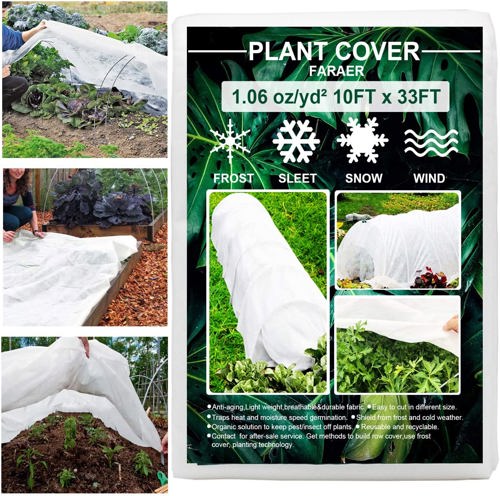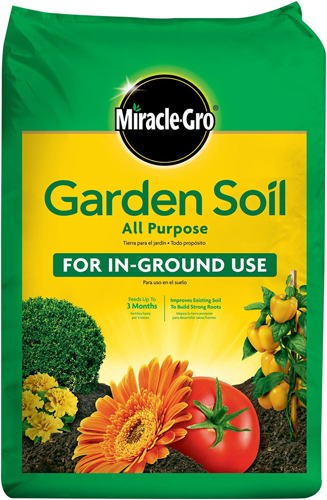There are many different types of garlic that you can grow, such as softneck, hardneck, and elephant garlic.

Fall is the best time to plant garlic, as it needs a period of cold weather to get established. Planting garlic is not overly difficult, but it does require some preparation. You should always choose the best quality bulbs available, as supermarket garlic may have been treated with chemicals that can inhibit its growth. Garlic plants need full sun and should be planted in well-draining soil. To help ensure successful growth, garlic should be soaked for several hours before planting, and can be treated with baking soda to prevent disease. We'll detail all the steps below and answer your most common questions to help you on your way to a bountiful garlic crop!
Successfully planting and harvesting garlic is a simple process that requires patience and attention to detail.
How to get the most out of your garlic harvest:
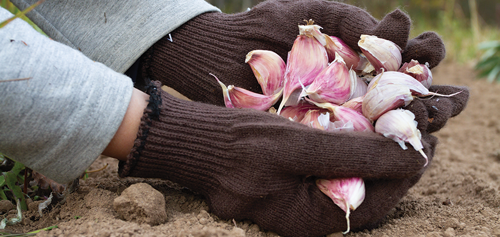
1. Start with the best quality garlic bulbs you can find. We recommend Fresh Siberian HARDNECK or Fresh California SOFTNECK Garlic depending if you want to go hardneck or softneck
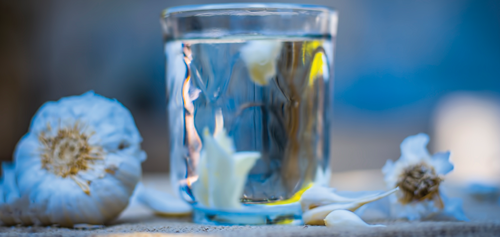
2. Give your garlic a head start by soaking the cloves in water for several hours before planting.
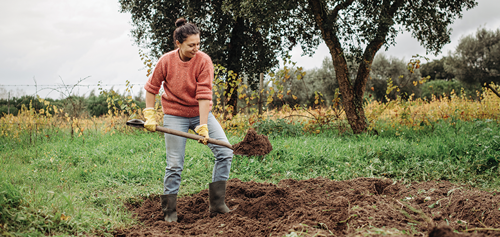
3. Prepare the soil by turning it and incorporating organic matter.
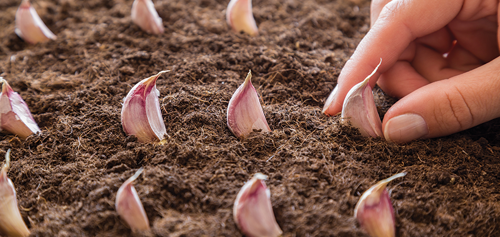
4. Plant the garlic cloves, making sure the pointed end is facing up.
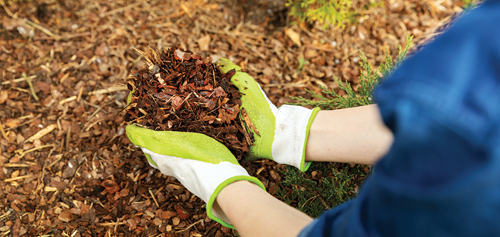
5. Cover the cloves with a layer of mulch to protect them from the elements. We like Hull Farm Cocoa Bean Shell Mulch. It provides excellent moisture retention and weed suppression. It also helps to maintain soil temperatures and provides a nutrient boost for the garlic plants.
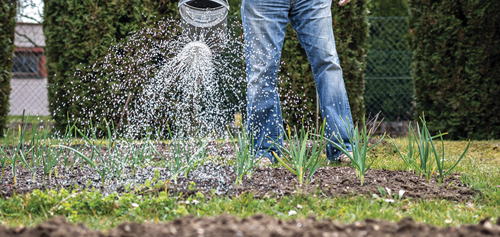
6. Keep the soil consistently moist by watering regularly.
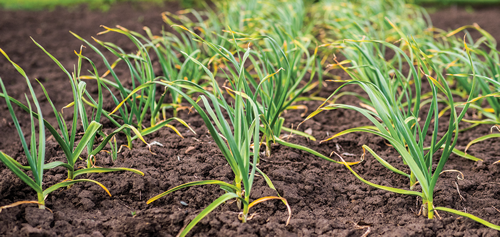
7. When the leaves start to yellow and the bulbs begin to swell, it's time to harvest.
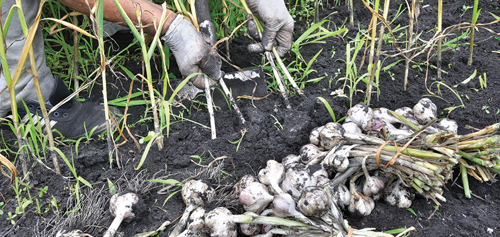
8. Dig up the garlic with care, being sure not to bruise the bulbs.
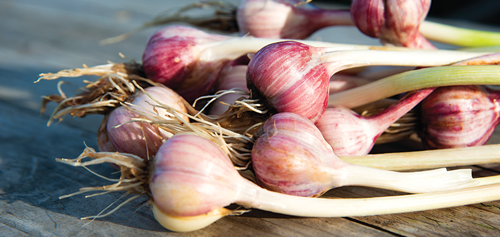
9. Gently peel away the outer layers of the garlic bulb and clean off any dirt.
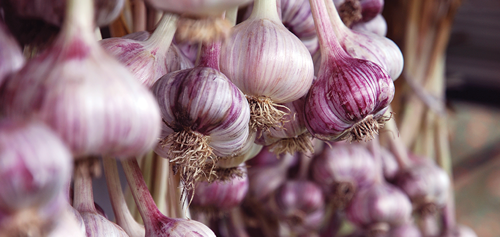
10. Dry the garlic in a cool, dark place for several weeks.
11. Store the garlic in a cool and dry place until ready to use.
Tips on How to Care for Garlic Plants and Maximize Yield
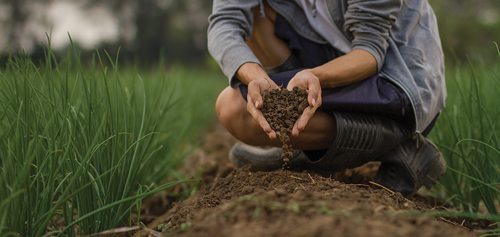
1. Fertilize garlic plants every month with a balanced fertilizer for best results.
2. To prevent disease, apply an organic fungicide to the plants every two weeks.
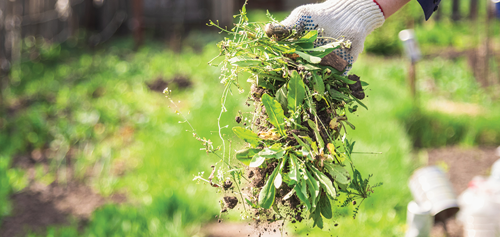
3. Remove any weeds or debris to ensure the garlic plants have enough space to grow.
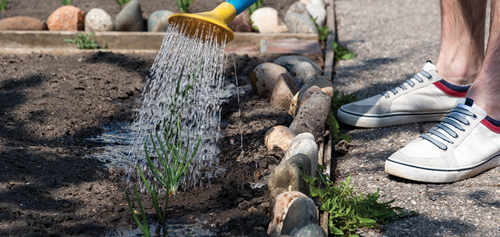
4. Water the garlic plants regularly, but be sure not to overwater them.
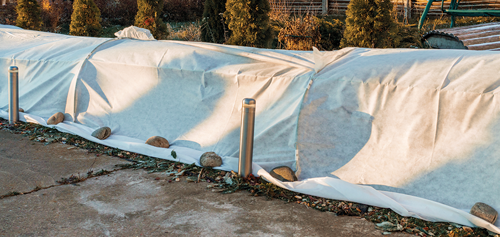
5. Protect the garlic plants from extreme temperatures by covering them with a frost cloth in cold weather.
6. Provide support for the garlic plants as they grow by staking them or using a trellis.
7. Avoid harvesting garlic too early, as it will not be as flavorful.
8. Remove any dead or diseased plants to prevent the spread of disease.
What is the best month to plant garlic?
The best time to plant garlic is usually sometime between October and December, depending on your climate. To get the most out of your garlic, it's important to prepare the bulbs correctly before planting. Start by selecting the best bulbs you can find, as supermarket garlic may have been treated with chemicals that can reduce the yield.
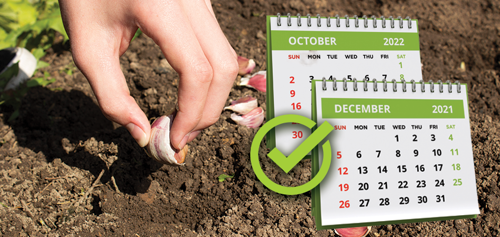
Soak the bulbs for several hours before planting, and consider treating them with a baking soda solution to prevent diseases. Plant the bulbs around 4-6 inches deep in well-draining soil and make sure they are in an area of full sun. With a little bit of care and attention, you'll be rewarded with a bountiful harvest of garlic in the summertime.
Is it easy to plant garlic?
Growing garlic is a relatively simple process, but it does require some knowledge and preparation. On the plus side, garlic is a very hardy plant and can be left in the ground over winter, (as long as it is mulched, that is).
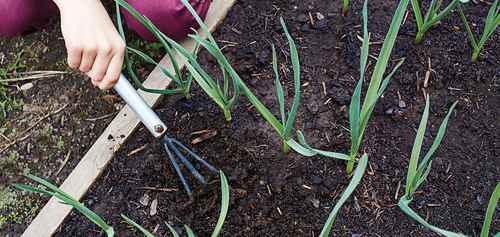
Garlic does need full sun, so it's important to make sure it is planted in an area that gets plenty of sunlight! Garlic is prone to disease, so it's important to avoid planting it near other plants which may not be an option for people with smaller gardens.
How do you prepare garlic bulbs for planting?
Before planting garlic, it's important to prepare the bulbs correctly. Start by selecting the best quality bulbs available, as supermarket garlic may have been treated with chemicals that can inhibit its growth. Make sure to remove any loose or damaged outer layers, then soak the bulbs for several hours before planting.
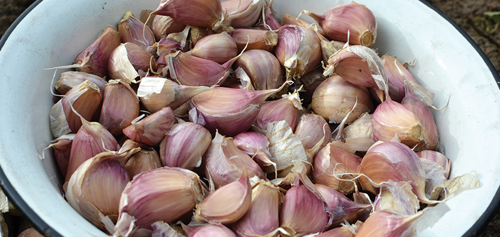
This helps to activate the growth hormones and also ensures that the bulbs are well hydrated. Additionally, you may want to consider treating the bulbs with a baking soda solution to prevent diseases. With the correct preparation, you'll be rewarded with a delicious harvest of garlic in the summertime.
Do you peel garlic before planting?
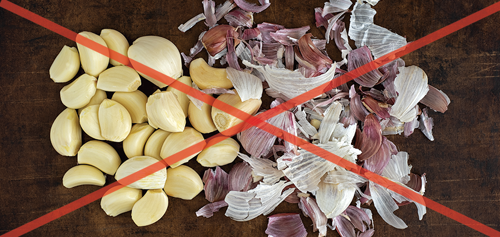
When planting garlic, it's important to remember that you don't need to peel the cloves beforehand...in fact, it is often better to leave them as is, as peeling can damage the cloves and reduce the yield!
Does garlic come back every year?
Garlic is an impressively hardy plant, and is able to survive in a variety of climates. In fact, many garlic plants are able to regrow from the same bulbs, year after year! This means that you don't have to replant garlic every season (as long as you take the time to properly care for the plants, of course).
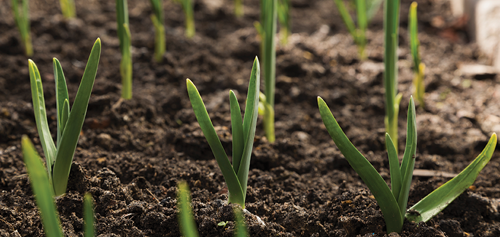
Make sure to mulch the garlic in the winter to protect it from extreme temperatures, and provide it with plenty of sun and water during the summer. We recommend something like Hull Farm 50150 Cocoa Bean Shell Mulch as it prevents weeds from growing, which helps to avoid any competition for the garlic during the winter months. Additionally it keeps the garlic insulated and warm, while also providing it with essential nutrients.
Why can't you plant supermarket garlic?
Garlic purchased from supermarkets is often treated with chemicals that can inhibit its growth, which is why it is important to always select the best quality bulbs available. Supermarket garlic is not always suitable for planting, so it's best to avoid it altogether.
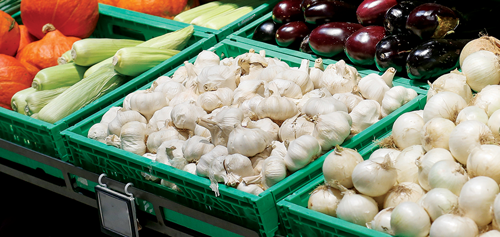
If you do decide to plant supermarket garlic, make sure to soak the bulbs for several hours beforehand, and consider treating them with a baking soda solution to prevent diseases. Quality matters when it comes to planting garlic, so always choose the best bulbs you can find.
Does garlic need full sun?
Absolutely! Garlic plants need lots of sunlight to thrive and produce a good yield, so make sure to plant them in an area that gets plenty of direct sunlight. While garlic can tolerate some shade, too much will reduce the yield. Additionally, garlic plants require well-draining soil, as they don't like to be waterlogged.
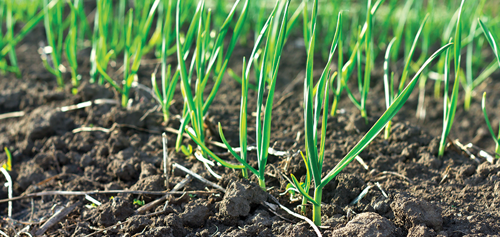
If you have poor soil quality, adding compost or other organic matter can help improve drainage and ensure that the garlic gets the nutrients it needs to grow.
Why do you soak garlic before planting?
Soaking garlic in water before planting helps to activate the growth hormones and ensure that the bulbs are well hydrated. This is especially important in the fall, as the cold weather can dry out the bulbs and reduce the yield.
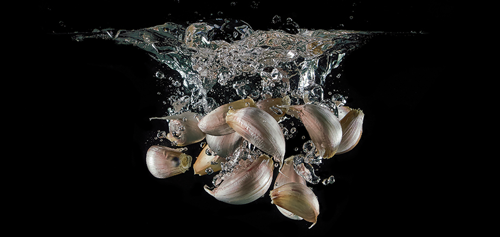
To soak garlic, simply place the bulbs in a bowl of water for several hours. You can also treat the bulbs with a baking soda solution, which helps to prevent diseases and boost the yield.
What does baking soda do to garlic?
Baking soda is a natural fungicide that can help to prevent diseases (like white rot), which is a common problem for garlic plants. It's also a natural alkaloid, which helps to create a more alkaline environment in the soil...this helps to create a more hospitable environment for the garlic bulbs and allows them to grow and thrive. As a bonus, it can also help to improve the flavor of your garlic!
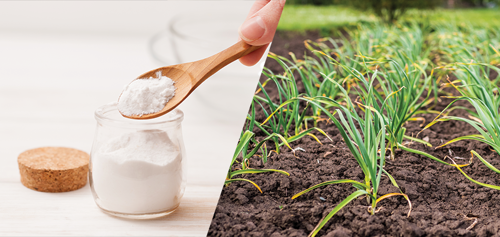
To treat garlic with baking soda, mix one (1) tablespoon of baking soda into a gallon of water. Soak the garlic bulbs in the solution for several hours before planting, and then rinse them off before putting them into the ground.
Can I leave garlic in the ground over winter?
Garlic can definitely be left in the ground over winter, as long as it is covered with a layer of mulch. This helps to protect the garlic from extreme temperatures and improve its chances of survival. You'll want to make sure to remove any mulch when Spring rolls around, as it will prevent the garlic from getting the sun and water it needs to grow.
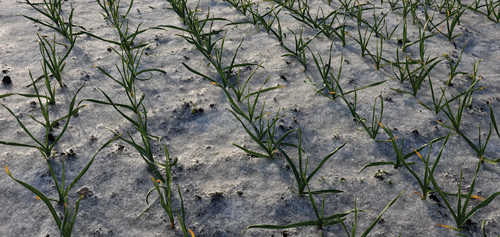
For maximum results, garlic should be harvested at the right time. Garlic is ready to harvest when the leaves start to brown and die back. Carefully dig up the bulbs and remove any excess dirt before storing them in a cool and dry place.
What can you not plant near garlic?
It's important to avoid planting garlic near other plants as it is prone to disease. Garlic should not be planted near:
- Tomatoes
- Asparagus
- Beans
These plants can all be affected by the same diseases (white rot and more) so keep them at a safe distance.
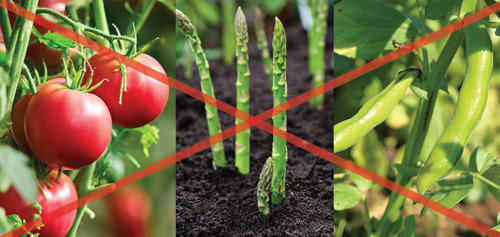
It's important to keep an eye out for pests, such as aphids and slugs, as these can cause significant damage to your garlic plants as well.
How long does it take to grow Garlic?
Garlic plants typically take around 6 months to mature, depending on the variety. (Softneck garlic takes slightly longer to mature than hardneck garlic, usually around 8-9 months). Elephant garlic takes even longer, usually around 10-12 months, so keep that in mind if you want to try your hand at Elephant garlic.
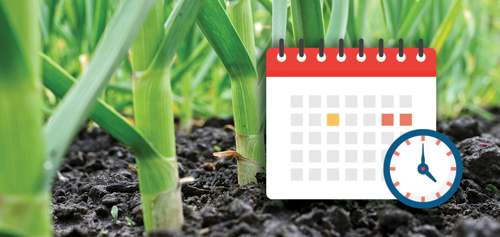
Planting garlic in the fall is the best way to ensure a successful harvest, as it needs a period of cold weather to grow properly. Garlic can be planted as late as December in some climates, but it is best to plant it as early as possible for maximum yield.
What do I need to Grow Garlic?
1. Garlic Bulb (HARDNECK)
Fresh Siberian HARDNECK Garlic Bulbs have a strong, sharp flavor, with large cloves that can be stored for a long time. It is also easier to peel and has a higher concentration of beneficial compounds than other hardneck varieties. Additionally, the 6-pack size makes it a great value for its price.
2. Garlic Bulb (SOFTNECK)
Fresh California SOFTNECK Garlic has a more intense flavor profile than other softneck garlic cloves due to its location and how it is grown and harvested. It may also have a longer shelf life because of the climate and soil conditions.
Hull Farm 50150 Cocoa Bean Shell Mulch is a great mulch for growing garlic because it is an organically sourced and renewable material that provides excellent moisture retention and weed suppression. It also helps to maintain soil temperatures and provides a nutrient boost for the garlic plants. Other mulches, such as wood chips and straw, are also good options for growing garlic, but they may not provide the same level of moisture retention or weed suppression as the cocoa bean shells.
4. Fungicide
Garden Safe Fungicide3 Concentrate is designed for use on vegetables, such as garlic, and is effective against powdery mildew, black spot, downy mildew, anthracnose, rust, leaf spot, botrytis, needle rust, scab, and flower, twig, and tip blight.
5. Trellis Netting
Garden Trellis Netting for Climbing Plants provide a secure growing environment for garlic by keeping out pests and other animals.
6. Plant Food
Miracle-Gro Water Soluble All Purpose Plant Food contains a balanced blend of essential nutrients that promote healthy growth and development, including nitrogen, phosphorus, and potassium. It also contains micronutrients like iron, manganese, and zinc, which are essential for proper root development, and it helps to maintain an optimal pH level for garlic.
7. Bulb Fertilizer
Jobe’s Organics Bulb Fertilizer provides the essential nutrients garlic needs to thrive. It contains high levels of phosphorus, potassium, and nitrogen to help promote strong root and bulb growth. It also contains natural organic ingredients that help promote soil health and beneficial microbial activity. Additionally, this fertilizer is specially formulated to be slow release, providing a steady supply of nutrients to the garlic plants over time. Compared to other fertilizers, this product offers a more balanced and targeted approach to feeding garlic, making it well-suited for optimal garlic growth.
8. Garden Stakes
GardenMate 50 Pack Galvanized Steel Garden Stakes are made from galvanized steel and are designed to be rust-resistant and highly durable. They are also less expensive than many other garden stakes on the market, making them a great option for those looking for a cost-effective solution. They are also strong enough to hold up garlic bulbs without bending or breaking, making them an ideal choice for growing garlic.
9. Frost Blanket
Plant Cover's Frost Blanket for Plants is a durable, UV-resistant fabric that helps protect plants from frost, wind, and extreme temperatures. It is designed to be used on raised beds and in-ground gardens and is easy to install.
10. Garden Soil
11. Miracle-Gro Naturals All-Purpose Garden Soil is a good choice for growing garlic. It is pre-mixed with a blend of organic materials, including composted bark, coconut coir fiber, and sphagnum peat moss, which are all beneficial for garlic growth.
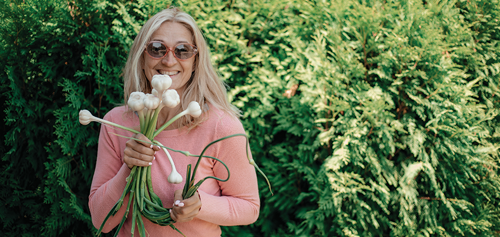
Growing garlic is a rewarding and delicious experience. With the right preparation, care and attention, you can enjoy the amazing flavor of freshly harvested garlic in the summertime.
Thinking about growing some garlic this season? Got any tips or stories about your experience growing garlic? We'd sure love to hear 'em! Leave them in the comments below and we can discuss! And don’t forget to follow us on Twitter, Instagram and sign up for our newsletter for more gardening tips and advice.
Until next time...happy growing from VivaFreshFood!


